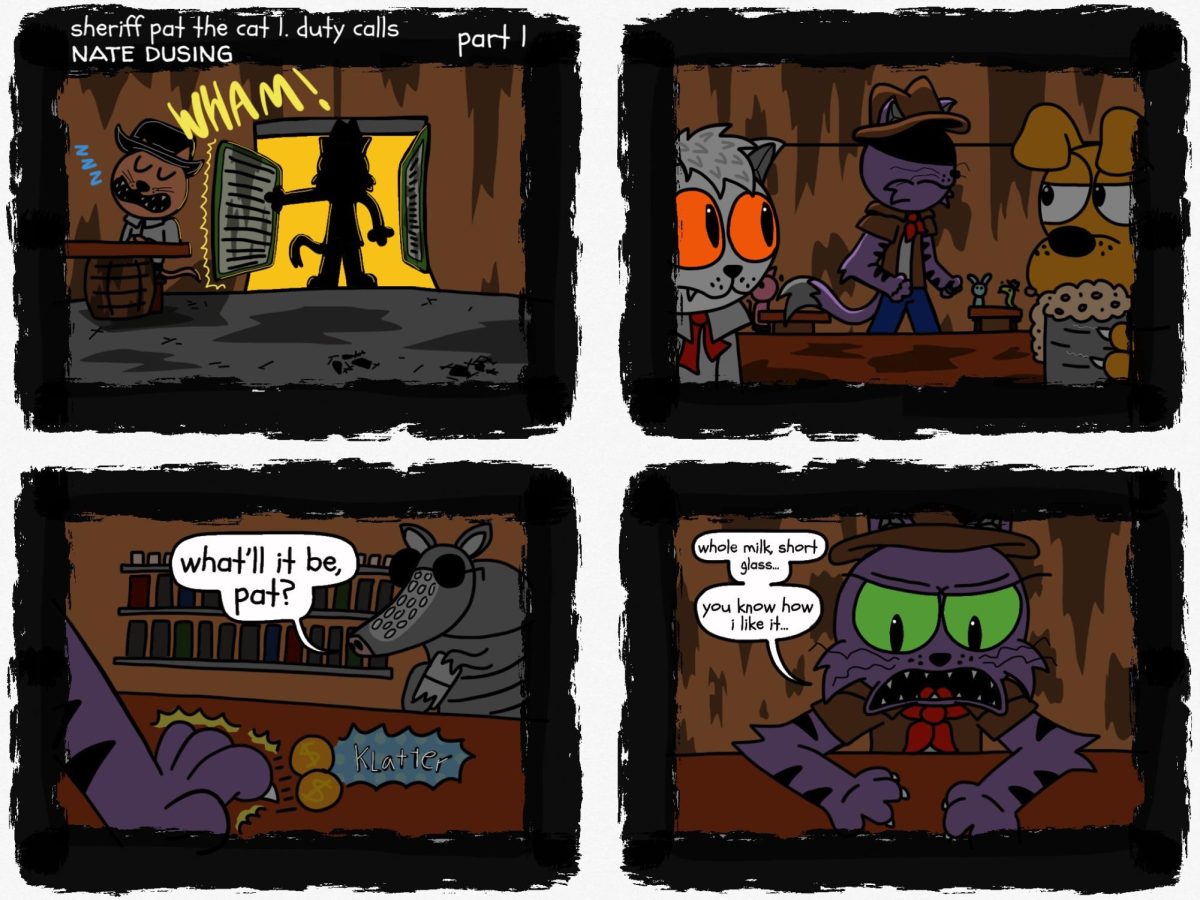How bad was he?
Ea-Nasir was a copper merchant in the Kingdom of Ur, one of the very first kingdoms for which we have real records. Why, then, would anyone care about a metal seller who lived hundreds of years before his people so much as rode horses? Supposedly, it’s because he was awful at his job–so awful, in fact, that he transcends time. While entire empires, great monuments, and deeds were washed away in time’s unceasing march, never to be remembered, Ea-Nasir and his low-quality copper remain.
Ea-Nasir is the focus of the world’s earliest known complaint. Recorded in the form of a clay tablet written in Akkadian almost 4,000 years ago, it’s on display at the British Museum in London. On this ancient tablet, one of three we’ve found about our entrepreneur friend, Ea-Nasir is accused of bringing déclassé copper; then, once the copper was tested, he allegedly took a “take it or leave it” attitude toward his customer, Nanni. Nanni wrote, “Who am I that you are treating in this manner and offend me; (that this could happen between) gentlemen as we (both) are!” Who is there amongst the Telmun traders who has (ever) acted against me in this way?”
You can tell that the Akkadian language is difficult to translate into English, but the sense that Nanni was scammed and furious about it shines through the archaic wording. He also throws shade on where Nasir is from, as the author essentially states, “Every other Telmunian trader I’ve dealt with was fine; what’s your problem?” He ends with one of the most humorous lines that I’ve ever read in my time researching ancient writing: “For this slight, and because you have despised me, I will enact grief upon you!” Harsh words, all over what would amount to nothing in today’s money. (Ancient coins are hard to convert to USD, but the amount paid is widely considered to be small as it was denominated in the smallest coin available in the kingdom, a silver minia.)
That, as previously mentioned, is not the only complaint held against the world’s most notorious copper trader. There are two others in far worse shape, and so they aren’t as biting (or as funny). The point remains, though: if these complaints are here, Ea-Nasir must have been a prolific scammer. . . Well, we can’t possibly know that for sure. What we do know, however, is that three people had a bad experience with Ea-Nasir, and then the internet took it as gospel that Ea-Nasir was a infamous scam artist with headlines such as these two in National Geographic: “Think customer service is bad now? Read this 4,000-year-old complaint letter” and “Meet Ea-Nasir – ancient seedy merchant and internet star.”
Um, he might not have been that bad (survivorship bias)
All that we are basing this copper salesman’s entire life story on are three complaint letters we found in his home. There is a common psychological effect known as survivorship bias that I think is to blame for this. It’s the logical error of only focusing on data from “survivors” (in this case, the clay tablets) and overlooking data from “non-survivors,” which includes the potentially countless times that an Ea-Nasir transaction went perfectly fine. Today, when writing a comment is easier than ever, only about 5-10% of people leave reviews on online products, according to FERA.ai. Imagine how few would write a positive review on a clay tablet almost 4,000 years ago.
If tales of old vendors who might have been mediocre instead of bad don’t have you on the edge of your seat, I don’t know what will. Jokes aside, logical pitfalls like survivorship bias have a significant impact on matters far more important than the copper trade in Ur. It happens every day in the news that we read, the posts that we view, and the narratives that we eat up daily. People like Steve Jobs, Mark Zuckerberg and Bill Gates are often touted (and sometimes tout themselves) as college dropouts and billionaires. The sense that they gained incredible success because they dropped out of college is a complete fantasy, and according to a study by Bankrate, Americans with some college experience but no degree have an average salary of $53,040 annually, a far cry from the seemingly endless funds of these proud dropout billionaires. Biases appear in facets of almost any story told to you, but it’s most apparent in the way that we learn history.
An incomplete picture of the Crusades
The Crusades are constantly being represented in our history and in our present. Students often learn about them as a fight for Christians traveling to the Holy Land, righteously freeing it from oppressive hands and allowing Christian pilgrims to travel freely. However, this particular narrative is built upon years and years of Christians telling the story for themselves. It doesn’t consider the viewpoint of those who they were fighting, let alone those who they killed. While it is true that the First Crusade succeeded in providing Western Europe’s Christians with a passage to the Holy Land, the story does not end there. For example, French and German Crusaders received permission to travel through the Holy Roman Empire. There, a bishop named Sigibert of Gembloux ordered the passing soldiers that before “a war in behalf of the Lord” could be fought, it was essential that the Jews convert; those who resisted were “deprived of their goods, massacred, and expelled from the cities.” Hence, when that group of Crusaders ran out of supplies down the road, they brutally sacked Jewish diaspora communities in the Rhineland Massacre. That also inspired other crusading armies to attack Jewish communities, as they did in southern Italy. Students usually don’t hear about this. They also tend not to learn about the nine total Crusades, where Christians only went on to “win” two. Students may not know about how Muslim civilians felt, suddenly coming under different religious rule. For that matter, Muslims, Orthodox Christians, and Jews from the Holy Land all died in various massacres, as the Crusaders could hardly differentiate between them and often identified anyone in local clothing as a target.
There is also the point that the Crusades caused irreparable harm, as during the disastrous Fourth Crusade, which is commonly cited as one of the major reasons the Byzantine Empire (the eastern survivor state of the original Roman Empire) eventually fell. In Western Europe, which was Roman Catholic, the Byzantines’ Orthodox Christianity led them to be regarded as schismatics. The Byzantines also had various economic feuds with the Venetians and became a target. The Four Crusade was “successful” in sacking Constantinople, the Byzantine capital, which led to a Latin Empire and decades of fighting between Catholics and Orthodox–all of them Christians. While the Byzantine Empire existed for a few hundred years longer, it never regained its previous strength, and Constantinople fell to the rising Ottoman Empire in 1453. This all goes to show that centuries of stories can be reshaped to fit any narrative.
The libel against Native Americans
For centuries, Native Americans received terrible treatment in history books. Introduced to children as “merciless savages,” as Jefferson wrote in the Declaration of Independence, historians for years grouped Native Americans into one national hegemony as simply “native” and minimized the differences that tribes had between them, which couldn’t be farther from the truth. This narrative, of course, is a direct consequence of the conquest of native lands. American settlers, if one would believe the old history classes, walked into deserted lands and set up shop, and if there were any natives in the area, they mysteriously decided to move away. The experience of various Native American groups is often all but lost in our textbooks. The government attempted to outright destroy their culture. From 1810 to 1917, for example, the U.S. federal government subsidized mission and boarding schools for “Indians,” and the conditions were brutal. Speaking in one’s first language would result in physical punishment. Believing in the gods that one’s parents taught would result in physical punishment. There are countless accounts of natives reporting mental, physical, and sexual abuse, which were recorded and promptly ignored.
Implications
Bias, a firm belief in what we think is true, can have catastrophic consequences, far beyond simple internet memes or clickbait news headlines. It’s extremely important for all of us to constantly check our own biases and think critically. That goes for me, too: in the process of writing this article, I came across plenty of evidence to back up the fact Ea-Nasir was a seedy merchant, but I intentionally omitted it, as many authors do when they want to get a certain narrative across. Taking into account what the author of any given piece is attempting to tell us is crucial to the critical thinking process. Historians and independent thinkers should always avoid blindly accepting what they’re told is true. The truth is often buried under the stories that we choose to tell, and it’s our obligation to dig it out.












